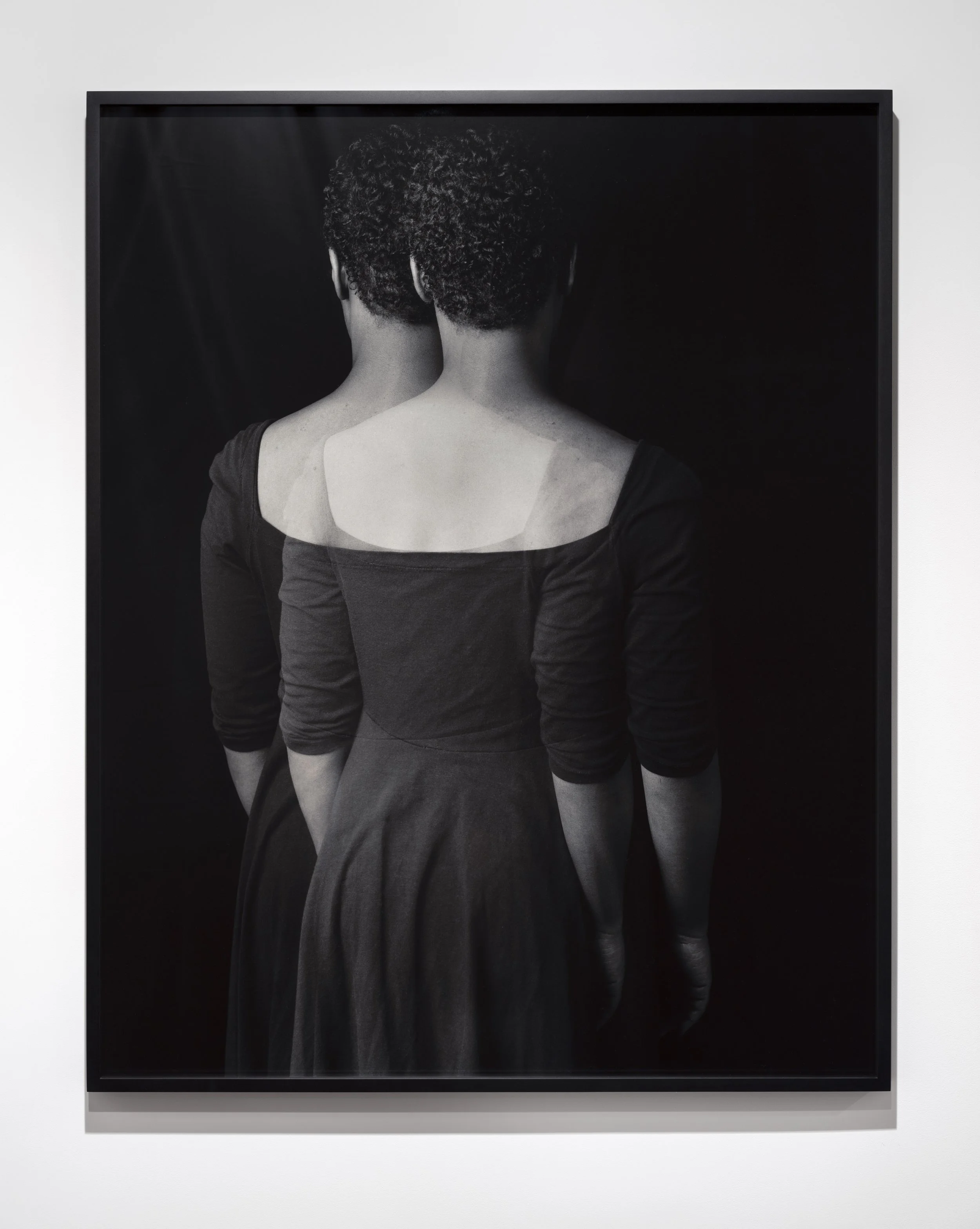Going Dark: The Contemporary Figure at the Edge of Visibility | Guggenheim
Total Transparency Filter (Portrait of N), 2017. © Stephanie Syjuco. Photo:Courtesy the artist; Ryan Lee Gallery, New York; Catharine Clark Gallery, San Francisco; and Silverlens, Manila
Written by: Madeline Lerner
The Guggenheim’s winter exhibit, “Going Dark: The Contemporary Figure at the Edge of Visibility,” leads the viewer to ponder what it means to be seen in a world that does not want to see you, and further, how visibility functions in a society marked by heightened surveillance. As indicated in the title, viewers witness the subjects of each art piece in the process of “going dark” or existing in a semi-visible state, a process that obscures their comprehensible, visual composition. The collection of artworks touches on the experience of visibility in the spheres of identity, technology, politics, and society. Taken together, the exhibit is a contemplative conversation on perception, affirmation, and safety.
Slow Fade to Black II, 2009–10. © Carrie May Weems, courtesy the artist and Jack Shainman Gallery, New York. Photo: National Gallery of Art, Washington, D.C.
Each subject is somehow obscured, rendering them not entirely whole and leaving the empty space up to the viewer’s mind to both interpret and question further. The exhibit successfully brings together a diverse group of artists who offer a wide range of approaches to producing the subjects’ obscurity. Each approach collectively centers on themes of identity, marginalization, and the dual implications of darkness as both potentially harmful and sometimes, a refuge. Therein lies an exploration of the potential for contradiction in the realm of concealment— that invisibility may be imposed or may be chosen as a self-protection measure.
Top: Black Light Series #4: Mommy and Daddy, 1969. © 2023 Faith Ringgold / ArtistsRights Society (ARS), New York, courtesy ACA Galleries, New York
Bottom: Nobody Knows My Name #1,1965 (detail). © The Charles White Archives. Photo: Courtesy Michael Rosenfeld Gallery, New York
Charles White’s “Nobody Knows My Name #1” depicts a boy’s face illuminated amidst a cloud of darkness concealing the rest of his body. In this renowned 1965 work, the darkness veiling the body can be interpreted as an exploration of issues of lack of visibility in socio-political spheres. This is a central theme explored by artists in much of the exhibit. In addition, some works explore the potential for darkness to paradoxically be both welcomed and feared at its core. Dawoud Bey’s “Night Come Tenderly Black” series features contemporary photographs of sites along the Underground Railroad. The images are rendered colorless and dimly lit, often demanding additional attention to discern details. The darkness conveys both the violently oppressive and dark nature of slavery and the crucial concealment that aided the escapes of many enslaved individuals.
Untitled #25 (Lake Erie and Sky), 2017. © Dawoud Bey. Photo: Courtesy of Sean Kelly
Moreover, various works incorporate literary references to the experience of blackness and visibility, notably Ralph Ellison’s 1952 novel, “Invisible Man.” Ming Smith, Faith Ringgold, and Kerry James Marshall each reference Ellison’s work as inspiration, and their works reflect on concepts of light, darkness, and social and political recognition.
Double Negative, 1990–2022. © Lorna Simpson, courtesythe artist and Hauser & Wirth. Photo: JamesWang
With over half of the featured artists being women, many of the pieces touch on the intersection of marginalization in race and gender. Lorna Simpson’s “Double Negative” features her subject facing away from the camera, and is doubly exposed— possibly serving as a reference to the dual experiences of discrimination experienced as both a woman and a Black person. Meanwhile, in Farah Al Qasimi’s series “It’s Not Easy Being Seen,” the artist covers model’s faces and bodies in green screen, with only their hijab visible. Qasimi, however, avoids digitally altering the green clothing as expected of a green screen and instead uses it to investigate the experience of invisibility for Muslim women in Western society.
It’s Not Easy Being Seen 2, 2016. © Farah Al Qasimi. Photo: Courtesy the artist and François Ghebaly Gallery
Ultimately, the exhibition is a tremendous examination of the dual nature of darkness and invisibility, showcasing their potential for both harmful consequences and, at times, beneficial offerings. By encompassing a diverse array of artists spanning an extensive period, the exhibition successfully provides a reflective and varied collection of approaches to the experience of semi-visibility amidst an oppressive world.














